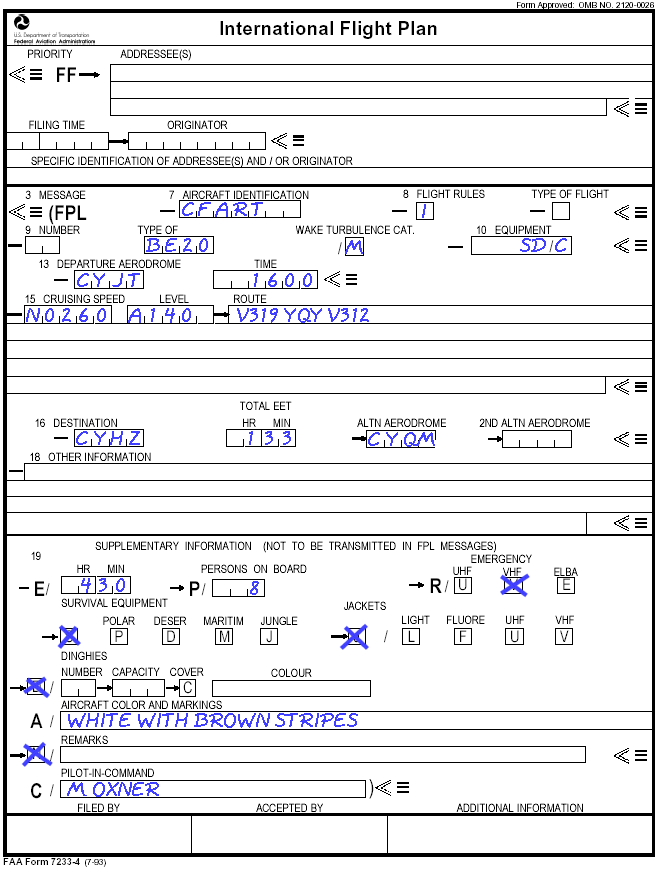
|
|
|
|
|
This week's topic:
IFR Flight Example, Part 1: Preflight
| STEPHENVILLE. NFLD STN YJT |
for use |
3000 |
6000 |
9000 |
12000 |
18000 |
| FDCN01 CWAO FCST BASED ON 251200 DATA
VALID 251200 |
08-15 |
2212 |
2125-17 |
2028-20 |
2138-25 |
2275-30 |
| FDCN02 CWAO FCST BASED ON 251200 DATA
VALID 251800 |
15-22 |
1916 |
2225-15 |
2228-20 |
2238-23 |
2172-30 |
| FDCN03 CWAO FCST BASED ON 251200 DATA
VALID 260000 |
22-06 |
1642 |
1938-10 |
2226-15 |
2340-21 |
2274-35 |
| STEPHENVILLE. NFLD STN YJT | for use |
24000 |
30000 |
34000 |
39000 |
45000 |
53000 |
| FDCN1 KWBC DATA BASED ON 230000Z VALID
251200Z |
0800-1500Z |
2482-41 |
248556 |
740658 |
249651 |
238850 |
233153 |
| FDCN2 KWBC DATA BASED ON 230000Z VALID
251800Z |
1500-2200Z |
2288-42 |
228157 |
730358 |
224650 |
226550 |
223352 |
| FDCN3 KWBC DATA BASED ON 230000Z VALID
260000Z |
2200-0600Z |
2087-41 |
209256 |
209754 |
208049 |
216749 |
213551 |
